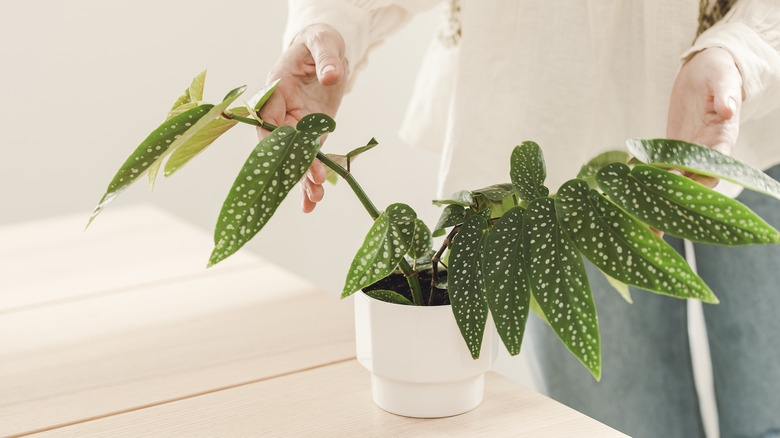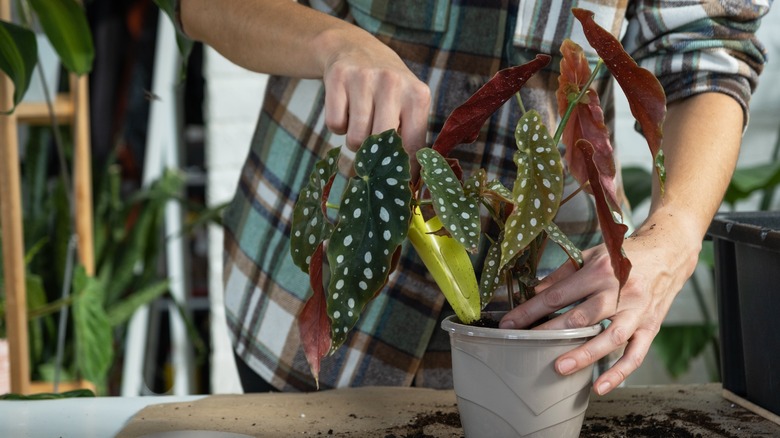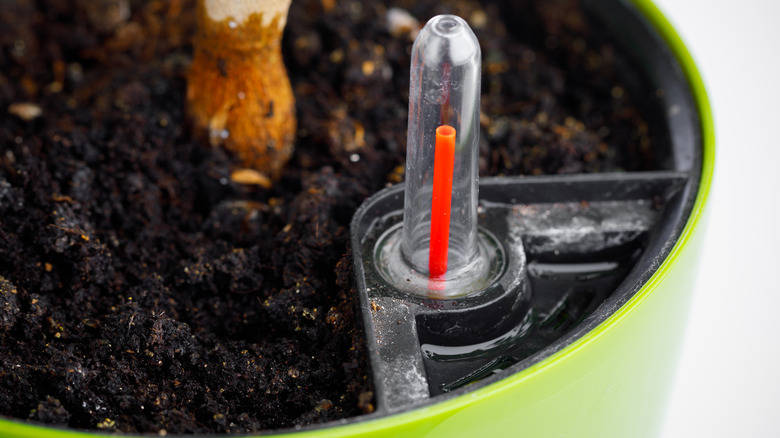The Best Way To Save A Begonia With Yellowing Leaves
Despite there being many different varieties of begonia, grown both outdoors or as indoor houseplants, the care requirements of begonias remain pretty much the same. Both need bright but indirect sunlight, regular watering and consistent moisture, and warm temperatures around 60-80 degrees Fahrenheit. Although considered to be an easy-care plant, the roots are prone to rotting if the soil stays wet for too long. If the leaves on your begonia plant are beginning to yellow it is most likely a sign that you are overwatering it.
You may be watering the plant too often so that the soil stays really soggy. Sometimes people don't realize they are overwatering a plant because the top surface of the soil is dry. You should always check by sticking a finger into the soil because water evaporates easily from the surface but underneath the soil may still be wet. Alternatively, you may not have well-draining soil or a pot with drainage holes, and so your plant ends up sitting in water-clogged soil for too long with nowhere for the water to drain away. The best way to save a begonia with yellowing leaves is to stop watering it and help the plant's substrate dry out, or repot it.
How to save a begonia from overwatering
You've already stopped watering your begonia, but your plant is already overloaded with water. The soil needs a few days to dry out, but this isn't going to happen if you don't have well-draining soil or a plant pot with good drainage. If the plant has been sitting in sodden soil for an extended period of time, there's a high chance that it will already have developed root rot, and this will have to be dealt with more quickly.
Your best option in this case would be to repot your plant. This way you can check the state of the roots and cut off anything that has already gone brown, mushy, or rotten. Then repot the plant in a better pot and with better-draining soil. Mix grit or perlite into your potting mixture to help provide aeration and allow the soil to drain more effectively. Make sure the new pot is clean and has plenty of drainage holes, or if you're using the same pot, clean it thoroughly before repotting the plant. Never reuse your potting soil or get soil from the garden as this can lead to cross-contamination. Only water the repotted plant once you are sure the soil is completely dry. Don't forget to remove any yellowing leaves so that you can observe the plant's progress back to health.
How to properly water a begonia
While it's true that begonias prefer moist soil, the soil still needs to dry out between waterings. There are a few ways you can check this. Stick your finger into the soil up to about your knuckle to check that it is dry. Alternatively, stick in a dry chopstick or cane, and if it comes out with soil sticking to it, then the soil is still damp or wet. You can also buy a water meter that sticks into the soil and tells you how much moisture there is.
Water your begonia from the top until you see the water dripping out through the drainage holes at the bottom of the pot. Top-down watering helps to flush minerals and buildup from the water out of the soil. Be careful not to wet the leaves as begonias don't like this, and it can lead to mildew.
How often you water your begonia may depend on your climate or whether your begonia is potted, planted in the ground, or hanging basket outside. After doing water checks you should get a feel for how often your begonia needs watering – it may be one or two times a week or more if it's particularly hot. If you're worried about overwatering, you can try watering from the bottom for potted begonias, but don't leave the pot to sit in water for extended periods of time. You can also look into self-watering planters and drip irrigation.


